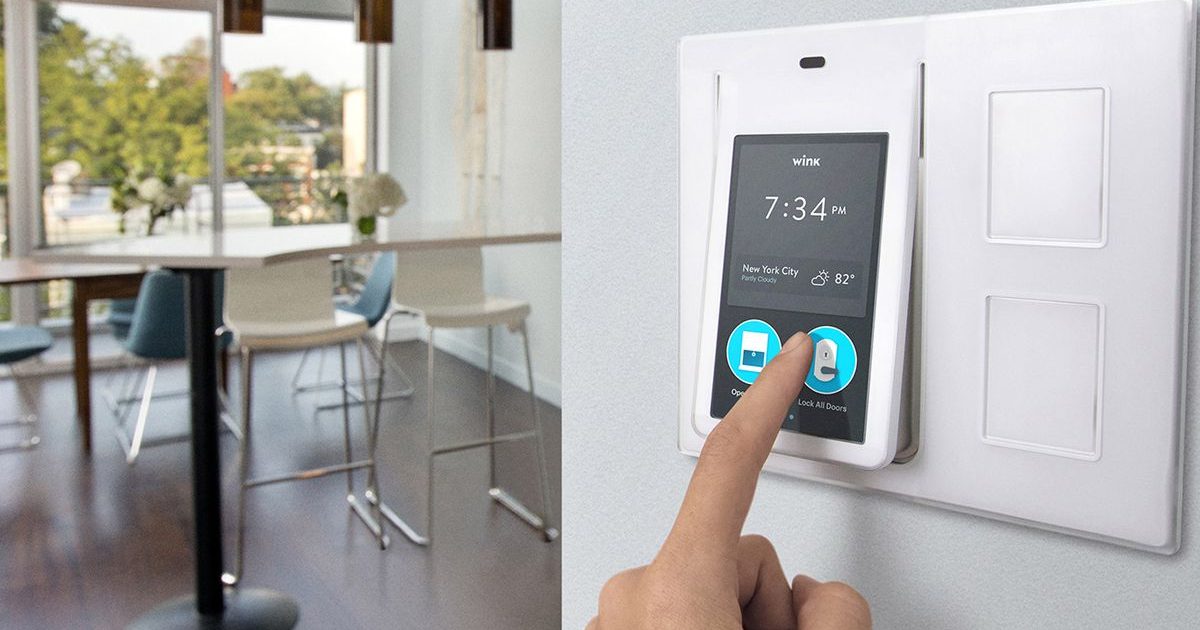You no longer need to renovate — or spend a lot of money — to incorporate smart technology into your home. Here’s how to do it in a few quick steps
Just a few years ago, creating a smart home with coordinated controls for lighting, motorized shades, multiroom audio, and heating and cooling required an expensive, comprehensive home-automation system and a renovation.
“When you used to think about these systems, it was very much high-end,” said Mark Spates, a senior product manager for Nest and Google Home in Mountain View, Calif. “It was a luxury.”
Today, many of those functions are accessible through affordable, consumer-friendly products. You can pick and choose the functions you want and install many of the products yourself, without opening up any walls.
“One of the advantages of these systems is that they’re light, from an infrastructure standpoint,” said Michael K. Chen, an architect in New York who has designed big-budget homes with automation systems requiring dedicated air-conditioned control rooms, as well as simpler homes with small-scale technology products from the likes of Nest, Sonos and Lutron.
Basically, you don’t have to do a full-blown renovation,” said Silvia Kuhle, a partner at Standard Architecture in Los Angeles.
But there are now so many home-technology products available — capable of performing so many different tasks — that it can be difficult to figure out where to start. So we asked architects and technology experts for advice on how to do it yourself.


Check Your Wi-Fi
Most smart-home products use wires for power but rely on Wi-Fi to communicate with the internet and smartphones. A home Wi-Fi network is a requirement, and the range of that network matters. In a small space like a one-bedroom apartment, a single Wi-Fi router is probably sufficient. But in larger homes, it may not be enough.
You need to have Wi-Fi throughout your house,” said Elizabeth Mathes, the director of smart home at the Home Depot in Atlanta. “If you think of having a smart garage-door opener — and most of our garage-door openers are now smart — you need to have Wi-Fi at the very edges of your house. Same for a smart doorbell or a smart door lock.”
The way to create a robust home network like that, she said, is to install a mesh Wi-Fi system, like Google Wi-Fi (from $129), Linksys Velop (from about $126) or Eero(from $199), which uses a handful of devices to create a single network over a larger area, preventing dead zones.
Start With One Thing
There is no need to make your home a technological wonderland on Day 1. “Starting with one piece is the way to go,” Mr. Spates said. “I started my journey with a single smart plug.”
That allowed him to turn a lamp on and off using an app. “What you’re doing is taking a very logical step that solves a problem,” he said, “or adds value to your home immediately.”
Choose the thing that seems most useful for your lifestyle — a smart dimmer, thermostat, speaker, security camera or something else — and add other things later if you find the first device helpful. With Home Depot customers, Ms. Mathes said, “Normally, once they buy one thing, we see them come back over the next several months and buy six or seven other appliances to really build it out.”
Choose Smart Bulbs or Dimmers
“The thing I get asked about the most is smart lighting, and being able to control your home’s lights from anywhere in the world,” said Soren Nyberg, an in-home adviser with Best Buy, in Minneapolis.
“Even if you’re away from home, it’s a great way to make sure that your lights are off,” he said. “Or you can turn them on when you’re on vacation,” for security.
There are basically two ways to add this functionality: with smart bulbs or smart dimmers. Smart bulbs like Philips Hue(from about $70 for a starter kit) and LIFX (from about $20 a bulb) are the easiest to install — just screw them into an existing socket — and offer dimming and optional color changes. The products themselves, however, may not be as aesthetically pleasing as standard bulbs, and may not fit every type of light fixture.
Smart dimmers like Lutron Caséta (about $100 for a starter kit) and Leviton Decora Smart (from $45 a switch) replace existing wall dimmers and switches to control fixtures with standard bulbs, although installing them does require some simple electrical work.
Beyond being able to control your lights from anywhere, an advantage to either type of system is the ability to set scenes with numerous fixtures dimmed to predetermined levels, and to schedule lights to turn on and off automatically.
Matthew Bremer, the principal of Architecture in Formation in New York, has designed large homes with elaborate home-automation systems for some of his clients, but he often chooses Lutron Caséta dimmers for smaller projects, including his own apartment in the Bronx.
“I can walk in and hit the top button and know it’s on the setting where every light in the apartment goes on to just the light level that I like at night — everything is dimmed to make the perfect martini,” he said. “The second one is for the housekeeper: Everything goes on super-bright.”
He also has a setting that turns off every light in the apartment. “From an energy conservation standpoint, that’s enormous,” he said.
It’s relatively easy to control sunlight in the same way. Battery-powered motorized shades like Lutron’s Serena shades and Hunter Douglas PowerView shades can be installed in existing window openings, and raised and lowered using an app — no wires required.
Add Multiroom Audio
Multiroom audio systems, which once required expensive, cumbersome equipment and lots of cable, are now easy to put in place. A longtime leader is Sonos, which makes speakers (from $149 each) that can be plugged in to any electrical outlet. They use Wi-Fi to simultaneously play the same music across all rooms, or different music in different rooms, with independent volume controls for each, through an app. The company also makes home-theater speakers, as well as amps that can power built-in and outdoor speakers.
We use Sonos a lot, even at the super high-end,” Mr. Chen said. “Anywhere you have power, you can have music, and I think that’s great. Suddenly, there’s no need for complex additional equipment to properly zone your apartment or house into different areas. It’s just set up to do that well.”
Apple offers similar functionality with its AirPlay technology, through its HomePod speakers ($349) and select speakers made by other manufacturers. Google does the same with Google Home speakers (from $49) and other manufacturers’ speakers with Chromecast built in. Amazon Echo speakers (from about $50) can also play multiroom audio.

Select Products for Efficiency and Peace of Mind
Want to save energy and money? Most standard thermostats can be easily replaced with Wi-Fi thermostats from companies like Nest (from $169) and Ecobee (from $169), with some simple electrical work. These thermostats can be controlled through apps, while you’re at home or away, and can automatically turn themselves down when you leave and back up when you return. They will also alert you when something is wrong, like if the furnace stops working
Decide How to Control Your Smart Home
It’s perfectly acceptable to use several different apps to control your smart-home devices individually. But when you have many devices performing various functions, making them work in concert may be more convenient. Fortunately, manufacturers and technology companies are making it easier for these devices to communicate with each other and operate in a coordinated fashion.
Lutron’s app, for instance, works with Sonos and Nest, so you can set a lighting scene and begin playing music with a single tap. And you can automate actions, like having Lutron dimmers turn on whenever a Nest Cam detects a person.
Amazon, Apple and Google are also vying to provide the master control for your smart home, with apps and related virtual assistants — Alexa, Siri and Google Assistant — that can control numerous devices. The number of compatible devices for these apps is growing rapidly, but there are still some glaring omissions — Apple’s Home app, for instance, doesn’t work with Nest and Ring products — so paying attention to compatibility is important.
Use a Virtual Assistant, or Don’t
Alexa, Siri and Google Assistant can all make controlling a smart home with voice commands easy, but the idea of adding smart speakers with microphones that are always listening for the next command makes some people uneasy.
Indeed, mistakes have been made. Last year, for example, Alexa inadvertently recorded a couple’s conversation at their home in Portland, Ore., and shared it with an unintended recipient.
Using a virtual assistant is optional, and the choice comes down to your feelings about convenience, privacy and trust.
For now, there are a few ways that most people control their smart homes. When David Renken, an architect in the Los Angeles office of Skidmore, Owings & Merrill, was renovating the 1920s bungalow in Long Beach, Calif., that he shares with his husband, he installed Lutron Caséta dimmers, Sonos speakers, and security cameras and smart locks from AT&T Digital Life.
“All of this stuff is tied together, so that when we drive into the driveway, the home knows we’re approaching, turns lights on and unlocks doors,” he said. Once they are inside, they typically use Alexa to control lights and audio with voice commands.
“We started the system small,” Mr. Renken said. But it has grown to include nearly all of their light fixtures, indoors and out: “Once you get spoiled, having to get up to turn the light off becomes a real annoyance.”
Source: no










